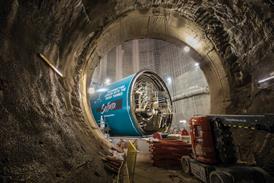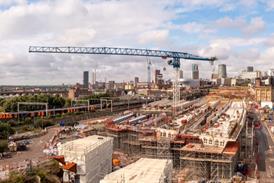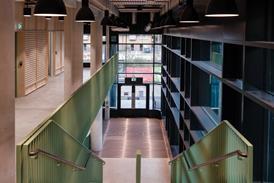We need to develop proactive strategies to protect ourselves from flooding

The Government has pledged to invest £100bn in the UK’s infrastructure over the next five years. However, with the November Spending Review looming, how sustainable is this investment given Chancellor George Osborne’s need to consolidate £20bn of debt in his ‘fixing the economy’ strategy.
The Institution of Civil Engineers (ICE) has called on the Government to protect current infrastructure investment, especially the £2.3bn it re-directed to flood defences in 2014 following the devastating February floods. That money was meant to last six years, but ICE warned that this reactionary ‘patch-up and do’ approach is not going to work.
I agree, we must adopt a more long-term view. The need for sustainable and lasting solutions to water management cannot be over emphasised. It starts with changing how we build and manage water in new and existing buildings, with an integrated drainage approach needed at every level if we are to cope with more storms and more intense rainfall.
We’ve paved over much of our urban landscape and reduced natural drainage where rain can drain in a controlled and sustainable way. James Hansen, one of the most respected climate scientists, warns that ice melting on and around Greenland and Antarctica will cause much faster rises in sea level than mainstream predictions, several metres of sea-level rise this century, and more super storms.
If more flooding is the future, then we need to develop and implement proactive strategies to protect ourselves. Putting in flood defences after the event and when the damage has been done might reassure the local communities affected but it doesn’t answer the long-term need for a robust national flood defence system.
The 2013/14 floods cost the economy an estimated £1.1bn. If the Government really wants to save money, then it needs a preventative strategy. By that I mean taking a creative and intelligent approach to flood management, harnessing the skills and experience of all those in the supply chain – specifiers, engineers, contractors and merchants - and taking advantage of the solutions and technologies already available to us. Green Infrastructure alternatives, such as Green Roofs and Sustainable Drainage Systems (SUDs), are increasingly recognised as highly effective ways of reducing the risk of flooding, protecting buildings in urban developments, and minimising the impact of climate change.
George Osborne signed off his announcement of the November Spending review with ‘We will fix the roof while the sun is shining’. Wouldn’t it be better not have to fix the roof in the first place?
It’s important to realise the full potential of integrated drainage systems, not just in our specialist area but across all construction disciplines. By actively engaging the wider industry we want to help build the water resilient communities needed to meet the challenge of climate change and avoid overspending on hugely expensive projects like London’s super sewer.
Michael White is business development director for Alumasc Water Management Solutions



























No comments yet